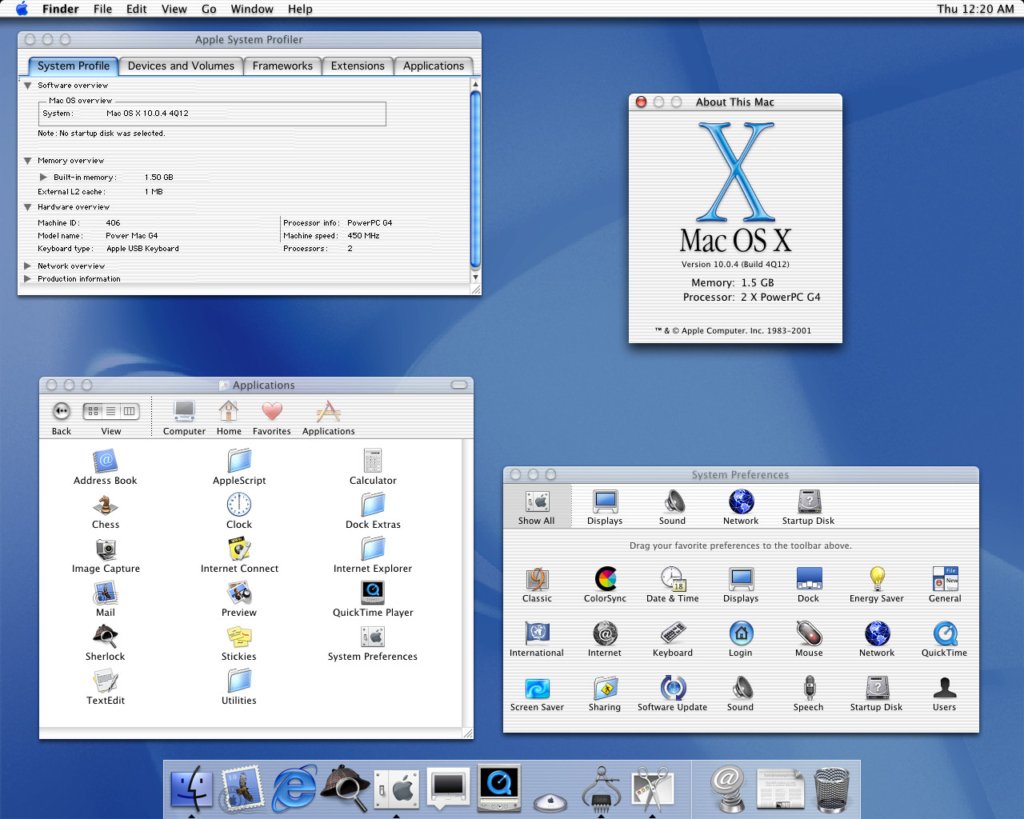In the ever-evolving world of technology, March 24, 2001, marked a significant milestone as Apple unleashed its groundbreaking Mac OS X 10.0 Cheetah. Priced at $129 and available both for standalone purchase and preinstalled on new computers, this next-generation operating system represented a departure from the classic Mac OS, promising a revolutionary experience for users worldwide.
Heralded by Apple’s visionary CEO, Steve Jobs, as the most important software release since the original Macintosh operating system in 1984, Mac OS X was designed to marry the power and openness of UNIX with the legendary ease of use and broad applications base of Macintosh.
Jobs expressed his anticipation for Mac users to embrace the stability, power, and elegance encapsulated in Mac OS X. Little did the world know that this release would pave the way for a new era in operating systems.
At the heart of the announcement were over 350 applications shipping on the launch day, with the promise of hundreds more to follow by summer. Over 10,000 developer organizations globally were committed to delivering over 20,000 Mac OS X applications. Industry giants such as Microsoft, IBM, Macromedia, and Symantec were among the contributors, solidifying the platform’s potential for versatility.
Apple sweetened the deal further by offering Mac OS X versions of its three flagship applications – iMovie 2, iTunes, and a preview version of AppleWorks 6.1 – as free downloads, showcasing the system’s multimedia and productivity capabilities.

| Released | March 24, 2001 |
| Original Price | $129 |
| System Requirements | PowerPC G3 processor (Unfortunately Original PowerBook G3 is not supported) 128 MB RAM 1.5 GB of hard disk space |
| Distribution | CD-ROM |
| Order Number | M7686LL/A |
At the core of Mac OS X lay the Darwin foundation, an incredibly stable, open-source, UNIX-based architecture. This formed the basis for the system’s robust features, including true memory protection, preemptive multi-tasking, and symmetric multiprocessing, especially on the dual processor Power Mac G4.
The new Quartz 2D graphics engine, based on the Internet-standard Portable Document Format, promised stunning graphics and broad font support. Aqua, the entirely new user interface, introduced breakthrough features like the Dock, revolutionizing document organization.
Mac OS X boasted an extensive array of features, including dynamic memory management, advanced power management, QuickTime 5 integration, and automatic networking. Users could easily manage all network and internet connections through a single interface, ensuring seamless online experiences.
The operating system offered full PDF support, native support for TrueType, Type 1, and OpenType fonts, and integration with iTools for direct access to iDisk free internet storage. The inclusion of powerful web development tools and support for symmetric multi-processing further solidified Mac OS X’s position as a comprehensive and forward-thinking platform.
Despite its groundbreaking features, the Cheetah faced a mixed reception upon launch. While praised for introducing the Aqua interface and overhauling memory management, it received criticism for missing features and performance issues. Reviews cited instances of poor performance, kernel panics, and system freezes, leading to a recognition that the operating system while promising, was still in its infancy.
ZDNet referred to Mac OS X 10.0 as “underdone,” citing performance issues and system freezes caused by main applications like Finder. CNET, rating it 6 out of 10, acknowledged its stability, UI, memory management, and speed but noted it wasn’t “ready for the masses” due to missing third-party applications and other issues.
David Pogue of The New York Times highlighted the aesthetic superiority and enhanced features of Mac OS X but noted it was not yet polished for the average user, citing missing features like CD burning and automated shutdown scheduling.
Despite the initial hurdles, Mac OS X 10.0 Cheetah laid the foundation for subsequent releases and innovations in the Macintosh operating system. The critiques were taken to heart, leading to the release of Mac OS X 10.1 Puma, which addressed many of the performance and feature concerns raised by users and critics.

The Cheetah, though replaced by newer versions, remains a crucial milestone in the history of the Macintosh operating system. It serves as a testament to Apple’s unwavering commitment to innovation and progress, showcasing the company’s ability to learn from feedback and continually refine its products.
As we look back 23 years later, the legacy of Mac OS X 10.0 Cheetah endures, reminding us of the transformative journey that began on March 24, 2001, and continues to shape the landscape of operating systems today.
Versions of the Mac OS X Cheetah
| Versions | Build | Release Date |
| Mac OS X 10.0 | 4K78 | March 24, 2001 |
| Mac OS X 10.0.1 | 4L13 | April 14, 2001 |
| Mac OS X 10.0.2 | 4P12 | May 1, 2001 |
| Mac OS X 10.0.3 | 4P13 | May 9, 2001 |
| Mac OS X 10.0.4 | 4Q12 | June 21, 2001 |
Further Reading and References
- Mac OS X Hits Stores This Weekend – Apple Newsroom
- Mac OS X 10.0 – Wikipedia
- Mac OS X 10.0 Cheetah – 512 Pixels
- Mac OS X 10.0 – ARS Technica
- Mac OS X turns 20: Most important software in Apple history – Cult of Mac
- Apple Mac OS X: A decade of Ten – The Register
Disclaimer: The data presented in this article is under continuous development and has been manually collected from various sources based on their availability. The author of this article may revise this dataset as additional research is conducted and reviewed. Please note that the information is provided “as is” and “as available” without express or implied warranties. The author cannot be held responsible for any omissions, inaccuracies, or errors in the published information. Any warranties relating to this information are hereby disclaimed.
Last updated: January 27, 2024
